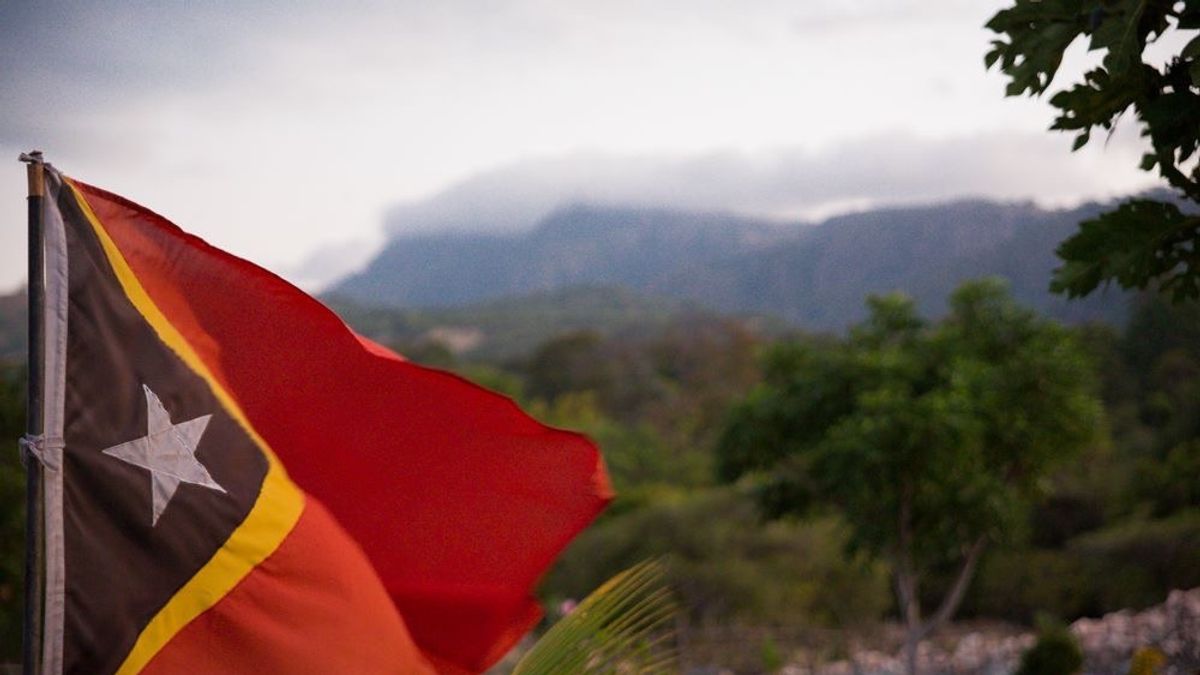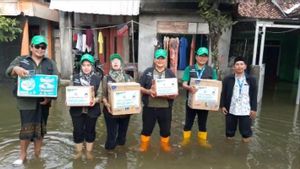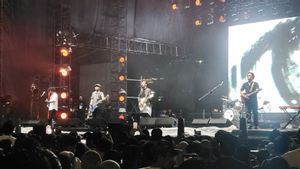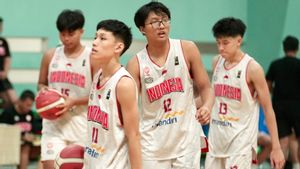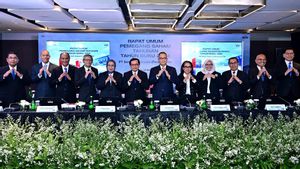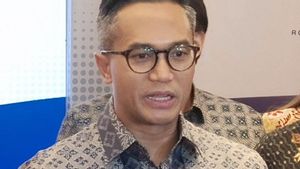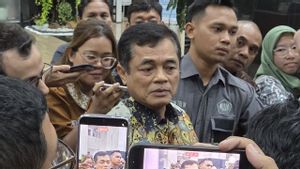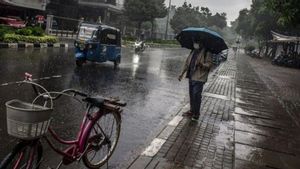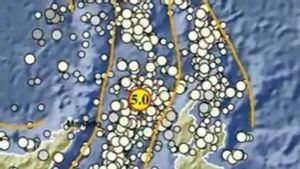JAKARTA - Exactly today, 44 years ago on November 28, 1975, East Timor (Timtim) declared its independence from Portugal. It's just that independence lasted briefly with the entry of Negeri Bumi Loro Sae into Indonesia's embrace.
It all started in 1640 ago. Groups of Portuguese people came and formed a small village in East Timor. Migrants from the Portuguese began to increase, their occupation slowly expanded from West Kupang and to other areas. The extension of the Portuguese government was inaugurated 60 years later.
Even so, historical actors did not find any traces of legacy from the Portuguese settlements in Dili, Manatuto, Laleila, Vemasse and a number of other areas on the north coast. Alfred Russel Wallace, a famous geographer from England in his book 'The Malay Archipelago', said that the Portuguese government in Timor was the most arbitrary form of occupation.
This is shown by the absence of any traces of legacy on the island of Timor, not even a patch of road existed from the Portuguese occupation. Even the city of Dili was called 'the poorest place, when compared to other poorest cities in the Dutch East Indies'
"There was no sign of farming or cultivation around it," Wallace wrote in his book published in 1896.
Entering the 20th century, Antonio de Oliveira Salazar led Portugal authoritatively. With the slogan of a 'corporatist-unitary republic', Estado Novo aka the New State of Salazar, he made sure that no group or political party would overthrow him.
The Salazar regime imposed self-censorship, propaganda and political imprisonment to 'neutralize' society. In addition, he firmly rejected the recognition of the 1960 UN Resolution on Decolonization, including East Timor.
The milestone of power changed, Salazar was replaced by Marcello Caetano in 1968. Caetano introduced primavera, or what is often called the spring of liberation. The winds of freedom began to blow, the dictatorship of the Portuguese government collapsed after accepting the prerequisites for the 1960 UN Resolution on Deconolization, and Timor was officially recognized as a non-autonomous territory under Portuguese rule.
Political parties in Portuguese Timor were allowed to stand with the coming of the Flower Revolution. Uniao Democratica Timorense (UDT) became the first political party, following the Associacao of the Integracao de Timor na Indonesia, which voiced integration with the Indonesian government. This was followed by the Frente Revolucionária do Timor-Leste Independente (Fretilin) party in September 1974.
These parties began to promote themselves to fight for the independence of East Timor. Fretilin scheduled agrarian reform, increased education budgets, decolonized administrative structures, and began establishing small industries whose main product revolved around coffee, as well as negotiating oil contracts with Portugal.
In addition, Fretilin also emphasized that it was "the only legitimate representative" of the Timorese people, not only based on the legitimacy of the vote but "on the basis of generally claimed values for" all Timorese people ".
Merdeka was then "annexed"
The conflict between the two camps (UDT and Fretilin) continued to escalate both verbally and physically. The UDT party, which was dominated by landowners, had a conservative view and rejected the Fretilin view with its agrarian reform.
The conflict between the two political parties was recorded in the writing of Clinton Fernandes on the website of the University of New South Wales Canberra. Timor Leste colonialism had been manipulated by Indonesia by launching covert operations, he wrote.
Fernandes said, Indonesia's efforts to launch a secret operation aimed at annexing East Timor. One example was the occupation of the Indonesian Consulate in Dili which allowed an Apodeti representative, Tomas Goncalves, to visit Jakarta in September 1974 and establish contact with the commander of the Indonesian Armed Forces (ABRI), General Maradean Panggabean.
On the other hand, UDT and Fretilin had united in repelling a common enemy, namely the Portuguese in January 1975. However, the coalition lasted only four months, shortly after UDT withdrew the unilateral coalition followed by a meeting of its personnel in Jakarta.
One of them was a UDT figure meeting with intelligence chief General Ali Murtopo in Jakarta. As soon as they returned, UDT launched a coup against Fretilin. In the so-called 'armed movement' on 11 August, UDT seized several key Fretilin offices and detained hundreds of Fretilin leaders and supporters.
Under conditions of destabilization, propaganda and military pressure from Indonesia, Fretilin finally proclaimed independence today, 28 November 1975. A few days after that, UDT and three other smaller parties announced the 'Balibo Declaration' - a call calling for the Indonesian government to annex Timor.
Even though it is called the Balibo Declaration, witnesses who signed it testified that the draft declaration was drafted in Jakarta and signed at a hotel in Bali under conditions of coercion as recorded in the report of the Commission for Reception, Truth and Reconciliation for Timor-Leste (CAVR) in 2005.
Nine days later, Indonesia invaded East Timor on 7 December 1975. The fighting between Fretilin and its military wing took place in the interior, the Armed Forces for the National Liberation of Timor-Leste (Falintil). The attack allowed Indonesia to successfully occupy Timor for 24 years.
The Indonesian government under President Soeharto occupied East Timor not without reason. In fact, Suharto initially did not want East Timor to enter Indonesian territory. However, after receiving input from Indonesian intelligence circles, one of whom was Majen Ali Murtopo, Soeharto might start to think again.
One of the considerations was seeing Fretilin as having a communist ideology, supposedly raising concerns for Indonesia, which as we know that Suharto was anti-communist. It is feared that Fretilin's strength will grow and it will result in the formation of a communist state on the Indonesian border.
Until finally, the Indonesian military forces were able to resolve the problem on December 7, 1975. However, this military operation actually worsened the ongoing conflict. Various attempts have been made to defuse the conflict, one of which is by bringing the East Timor issue to the UN after negotiating with Portugal.
On 5 May 1999, finally an agreement was reached between Indonesia and Portugal to hold a referendum in East Timor. The agreement became known as the New York Agreement. In addition, the UN also formed the United Nations Mission in East Timor (UNAMET) to guard the agreement between Indonesia and Portugal in its process towards the East Timor referendum.
The referendum was held on August 30, 1999 and carried out with two options, namely accepting special autonomy for East Timor within the Republic of Indonesia or rejecting it.
The result was that 344,580 people or 78.5 percent of the total population of East Timor chose to reject the special autonomy of the Republic of Indonesia. Then in October 1999 East Timor officially separated from the Republic of Indonesia.
The English, Chinese, Japanese, Arabic, and French versions are automatically generated by the AI. So there may still be inaccuracies in translating, please always see Indonesian as our main language. (system supported by DigitalSiber.id)
